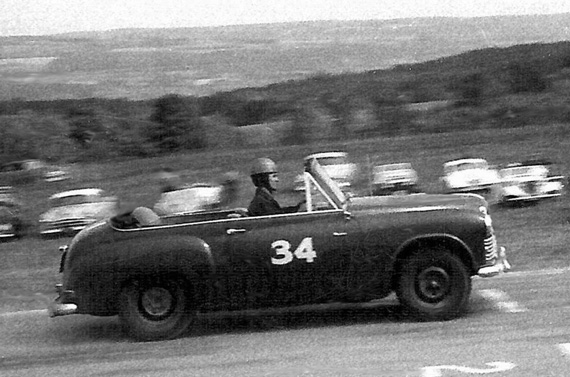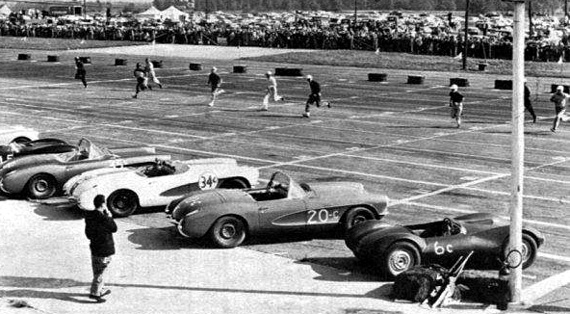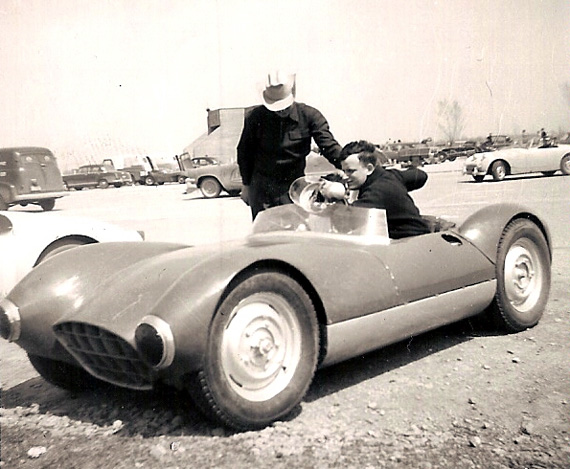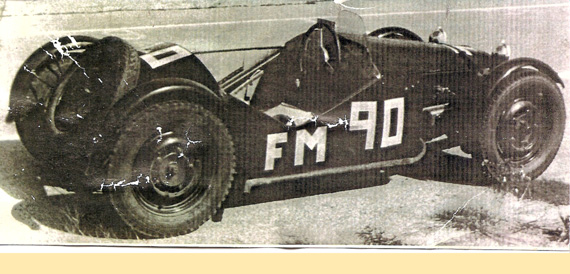
Almost a race car. After the brakeless Hillman, Sader decided to build his own racecar, powered by a Jowett Javelin engine. Sadler photo.
Story by John Wright
As we read last week, a young Bill Sadler had bought himself a Hillman convertible but the car had an anemic four cylinder engine. It just wasn’t fast enough. He surveyed the engine compartment and determined that a 2.5 liter Ford V-8 “60” engine would fit.
But, that little Ford flathead just wasn’t quite enough and so two Stromberg 97 carburetors, the standard hot rod carb of the day made the little Hillman go. Street racing was not enough and so Bill determined that it was time to take the car to the track. What track you say? Why the brand new track on the hill in Watkins Glen. But the car had poor brakes and he was black flagged. Over the winter, he decided he would design and build his own race car and return to the Glen, which would eventually result in the Sadler Mark I.
The Sadler Mark I
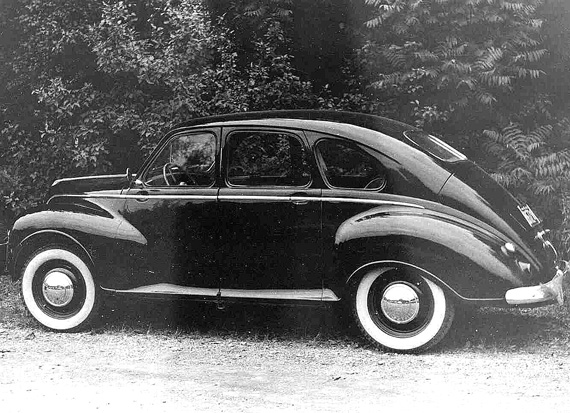
a Jowett Javelin at Watkins Glen in 1950. Photo by Frank Schaffer. Click on photo to read more about the Jowett.
He wanted a car designed specifically for racing but at a price he could afford – low. At the time, the Jowett Javelin was an advanced design with a four cylinder horizontally opposed engine with torsion bar suspension all round as well as front wheel drive. He picked up a second hand Jowett second hand in Toronto Ontario and drove it to his shop where he removed all the parts he needed for the project. In the time honoured tradition of the day, he drew chalk lines on the floor of the shop to gauge the dimensions he needed. He decided on a two inch tube frame and after firing his welder, he taught himself how to weld and did up the chassis. He added a Morris Minor rack and pinion steering and added a rudimentary body with cycle fenders welded on with steel rod.
Off to the Races: Watkins Glen 1954
He drove the car to the track and went through scrutineering at Lester Smalley’s Garage in downtown Watkins Glen. However, there were two problems with the car when it was on the track. First of all, it ran well until it got to 4000 to 5000 rpm and then it would misfire. Bill couldn’t trace the reason for this illusive misfire. Then, in the main race one of the fenders fell off. He pulled over to the side of the track and pulled the other one off. Back at home, Bill discovered he had a resonating dashboard switch. At 10Hz, the darn thing would vibrate and affect the ignition. He put in a different toggle switch and the engine misfire went away.
From a Jowett Javelin engine to a TR2 engine to a Chev V-8
That winter a friend of Bill’s had an accident in his TR2. The car was totalled. He went to his friend and asked him if he could buy the wreck for the engine. There was a problem as the stock TR2 engine with the twin SU carburetors wouldn’t fit as the chassis tube was located where one of the stock SU carburetors was mounted on the intake manifold. Bill decided to build his own fuel injection system for his TR2 engine. It worked after he did tests on the system on his work bench. With increased compression, a hot camshaft and the new fuel injection system, the engine was putting out a little over 100 horsepower where it had put out perhaps 80 horsepower before.
Over the winter of 1954-55 Bill constructed a new fiberglass body for the car. He raced his uprated special at the Glen and at Canadian tracks like Edenvale just south of Georgian Bay and at the newly opened Harewood Acres track. The car was pretty fast but he had oiling problems with the Triumph engine which led to a burned bearing. At about that time, he decided to put a version of the brand new Chevrolet V-8 in his car. The upshot was a car which was very advanced for the time. It sported a Wilson preselector transmission hooked up to the rear differential. It was this car which led to Bill’s winning the Queen Catharine Cup at the Glen in 1958.
